EdChoice Public Opinion Tracker: Top Takeaways August 2022
The 2022–23 school year has kicked off for most families across the country. I, like many of you, have family members working in education, with close and more distant relatives working in elementary, high school, and even higher education.
They are excited. It feels like they might finally have a chance to go back to what school was like before the pandemic threw everything into chaos.
This feeling is backed up by our data. In May (the last month we asked questions related to COVID in schools), the majority of parents felt comfortable with their child attending school in person. Flash forward to August, and parents’ comfort with their child attending school has only grown.
But COVID is not the only thing on the minds of parents, teachers, administrators and students. School funding, teacher shortages, school safety and many other critical topics are still top of mind in today’s education landscape.
We asked about these topics, among others, in the August wave of EdChoice’s monthly Public Opinion Tracker. Working together with Morning Consult, we survey a nationally representative sample of adults 18 and older (N=2,200) each month. This latest survey was in the field August 15–16. With additional sampling, we obtained responses from 1,088 parents of school-aged children. Here are the key findings that we observed in August:
1. The majority of Americans had seen, heard, or read something regarding teacher shortages in August. For the first time in our polling, we asked respondents whether they have seen, heard, or read anything about teacher shortages. Perhaps unsurprisingly, 70 percent of respondents were aware of teacher shortages. When asked about how they are receiving information regarding teacher shortages, the majority of respondents were made aware via national or local news. Roughly one-fifth of Americans learned about teacher shortages from their friends and family, or from communication from their school district.
We also asked Americans, for the first time in our polling, whether they had heard about public schools losing students. Four in ten respondents reported being aware of the enrollment decline in public schools. Interestingly, how Americans learned about the enrollment decrease in public schools mirrored how they learned about teacher shortages. Nearly half of respondents became aware of the enrollment decline via national or local news, while only roughly one-fifth of respondents relied on their friends and family, or communication from their school district.
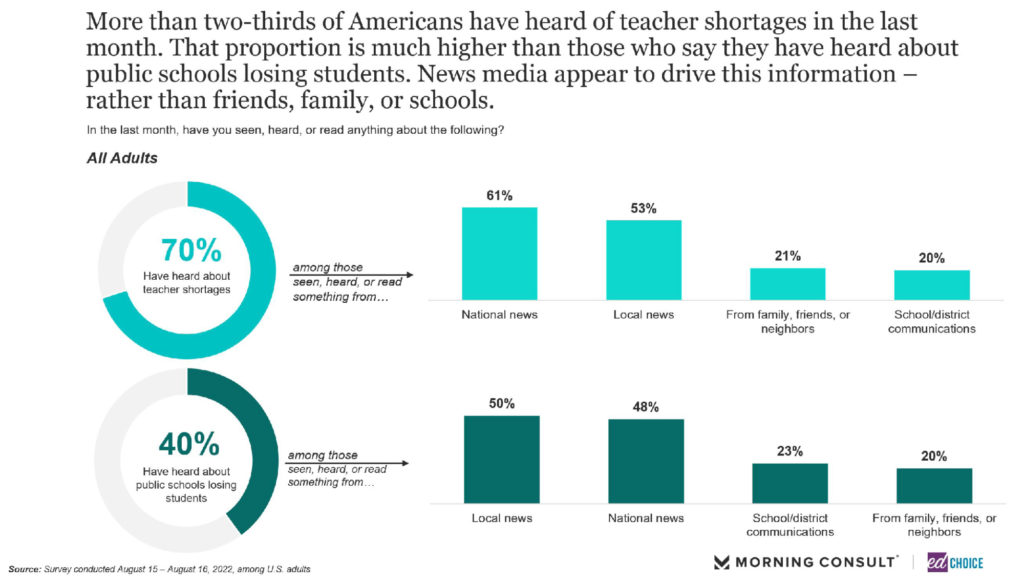
2. Although nearly 70 percent of Americans respect the teaching profession, two-thirds still say they believe K–12 teaching is undervalued. In another new question, we asked Americans how they believe certain professions are valued. We also asked respondents how much they respect each profession. The majority of Americans (66%) believe the teaching profession is undervalued, while only 7 percent believe teachers are overvalued. Americans were more likely to say teachers were undervalued than they were for any other profession, though members of the military and police officers followed close behind. When asked whether they respect the teaching profession, 69 percent of Americans indicated they respect the teachers. Teachers were the third most respected profession behind doctors (76%) and military members (75%).
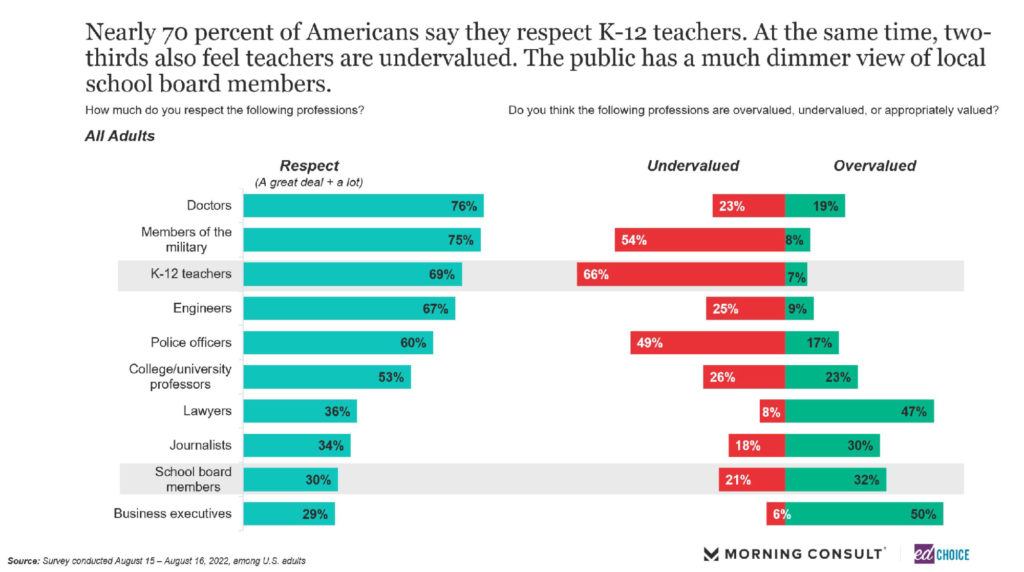
3. Concern about violent intruders entering schools declined in August. When we first asked the question in the wake of the Uvalde tragedy in June, 42 percent of parents were either extremely or very concerned about the possibility of a violent intruder entering a school. In July, the percentage of parents who were concerned about a violent intruder increased to 50 percent. In August, the percentage of parents concerned dipped to 43 percent. Broken down further, parents of younger children (K–4) continue to be the most concerned, at 48 percent. Parents of younger children were less concerned in August than in July, falling from 52 percent to 48 percent. This trend is also seen in parents of middle school children and parents of high school children. Concern among parents of middle school children fell 6 points in August, while concern from parents of high school students fell 8 points.
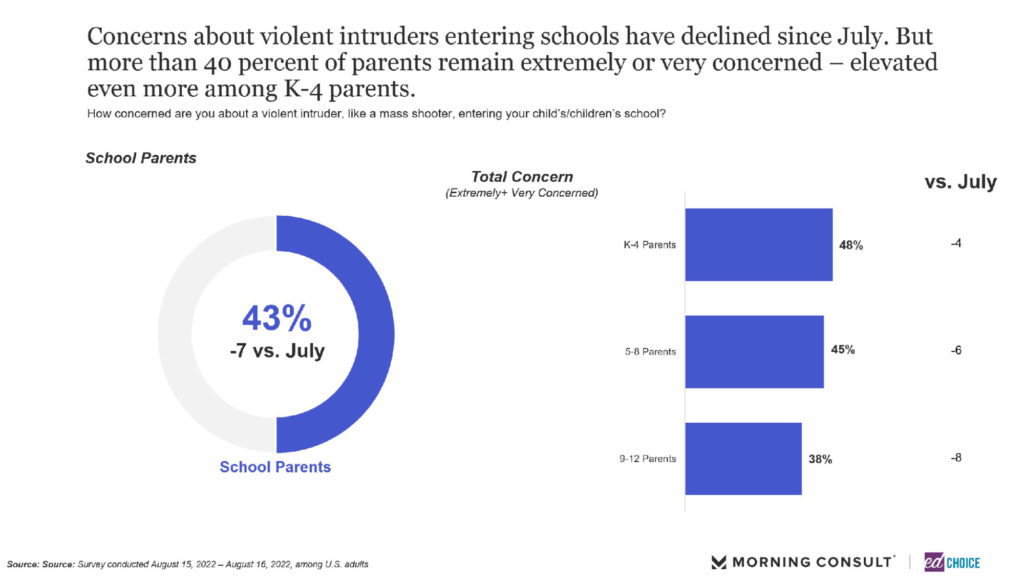
4. Parents felt more positive toward their school’s handling of mental health, guns, bullying and violent behaviors in August. This is the third month in a row we have asked parents how they believe their school is handling critical issues like mental health, guns, bullying and violent behaviors. From June to August, parents were increasingly optimistic about their schools’ handling of such issues. When discussing guns and bullying, the percentage of parents who felt positive about their schools handling of such issues increased four points from June to August. Parents’ positivity towards their schools’ ability to address violent behaviors jumped seven points in the same span. Parents’ optimism about addressing mental health has remained steady from June to August.
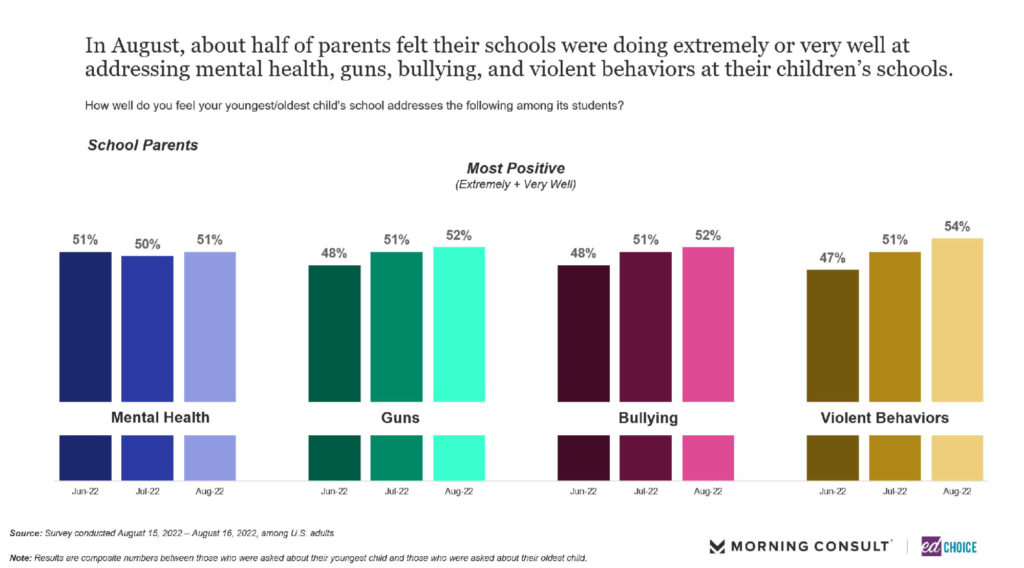
5. Parents are still quite comfortable with their child attending school. In the current state of the pandemic, more than 8 in 10 parents are comfortable with their child attending school in person. This rose by 3 points over the summer.
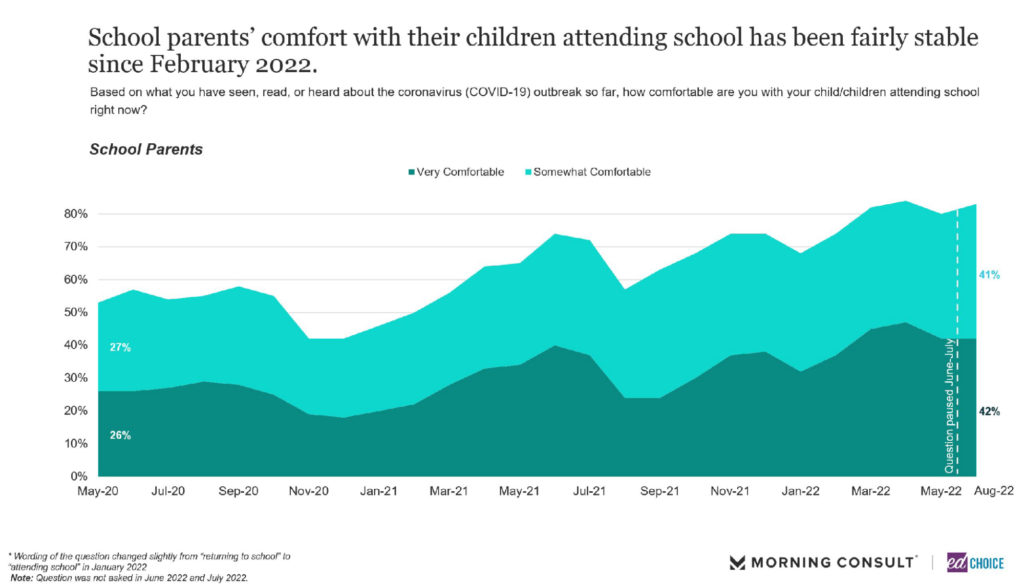
6. The proportion of parents who feel their child progressed very well last school year declined in August. We ask parents about their child’s progression during the last school year in three separate areas: academic learning, emotional development, and social development. Notably, when we asked this question in June, the percentage of parents who believed their child progressed very well in all three of the areas above was at the highest level we recorded since the question was first asked in December of 2021. It did not stay there. The percentage of parents who believe their child progressed very well with academic learning decreased each month since the school year ended. Less dramatically, the percentage of school parents who believe their child progressed very well in emotional development and social development decreased slightly from July to August.
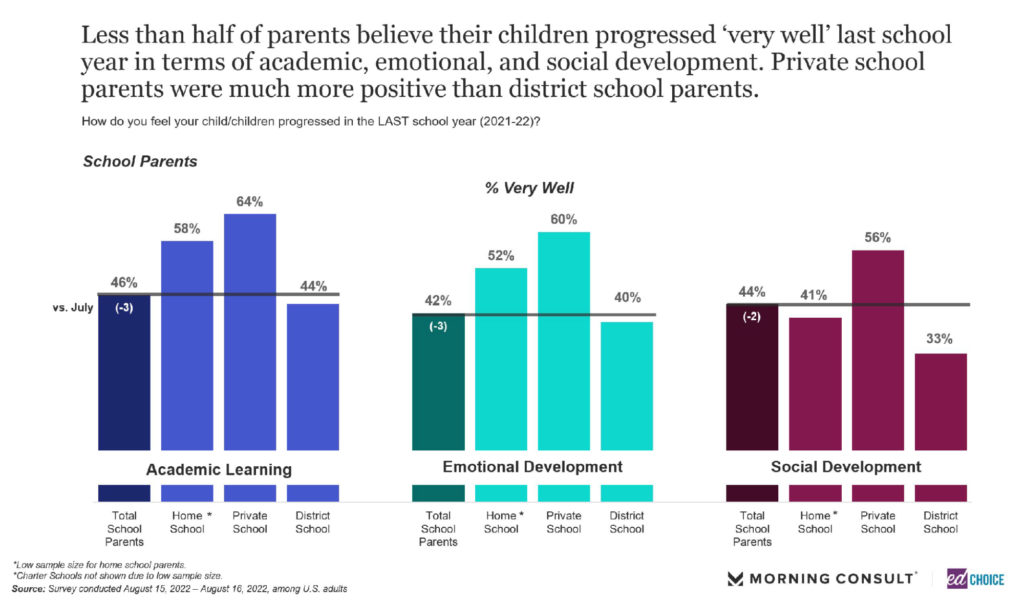
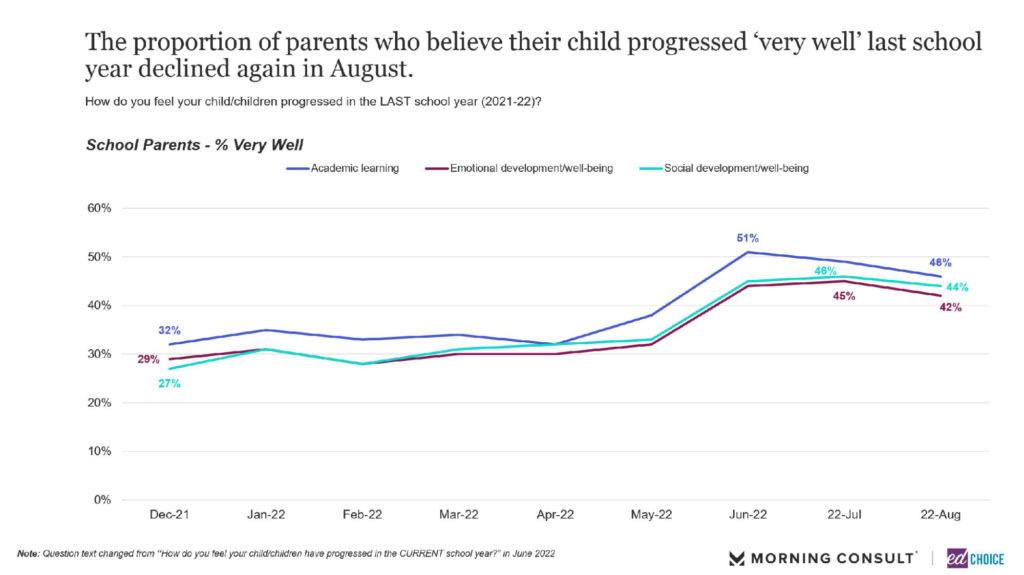
7. The proportion of Americans who believe school funding is too low increased in August. Asked without any kind of priming, the majority of Americans believe that school funding is too low. When shown information regarding school funding, the percentage of Americans who feel school funding is too low drops to 39 percent. That is a 3-point increase from July.
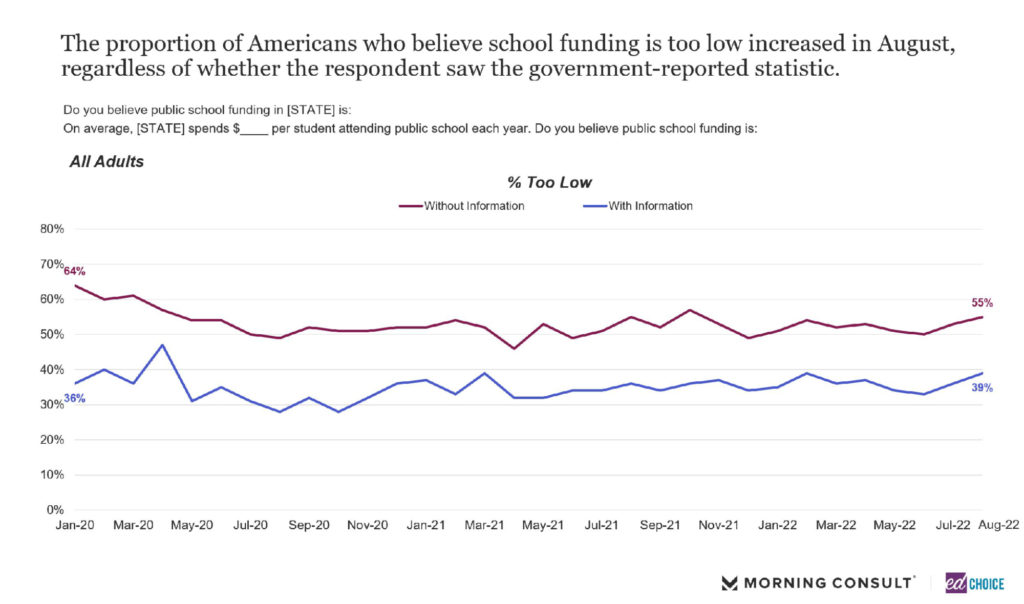
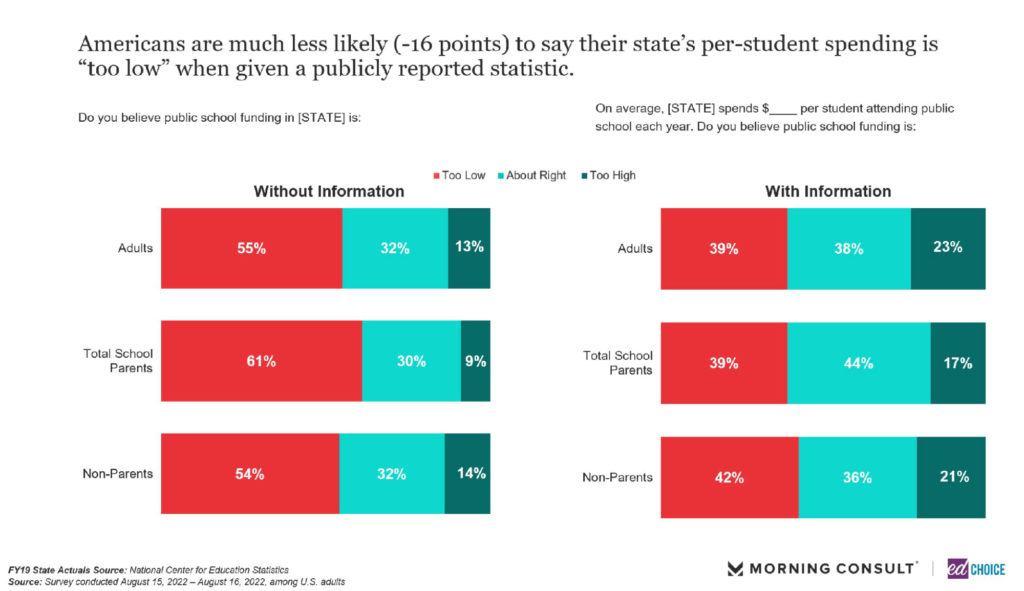
8. Non-parents’ median estimate of how much money public schools spend rose to an all-time high. Interestingly, non-parents estimated $10,000. This estimated amount from non-parents is the closest guess to the actual average expenditure we have observed yet. The actual average per-student expenditure is slightly below $13,000. School parents, on the other hand, are getting further away in their estimations. School parents estimated $3,000 is spent annually on each student by public schools. Parents of younger children (K–4) are even further away, estimating that $2,000 is spent on each student per year in public schools.
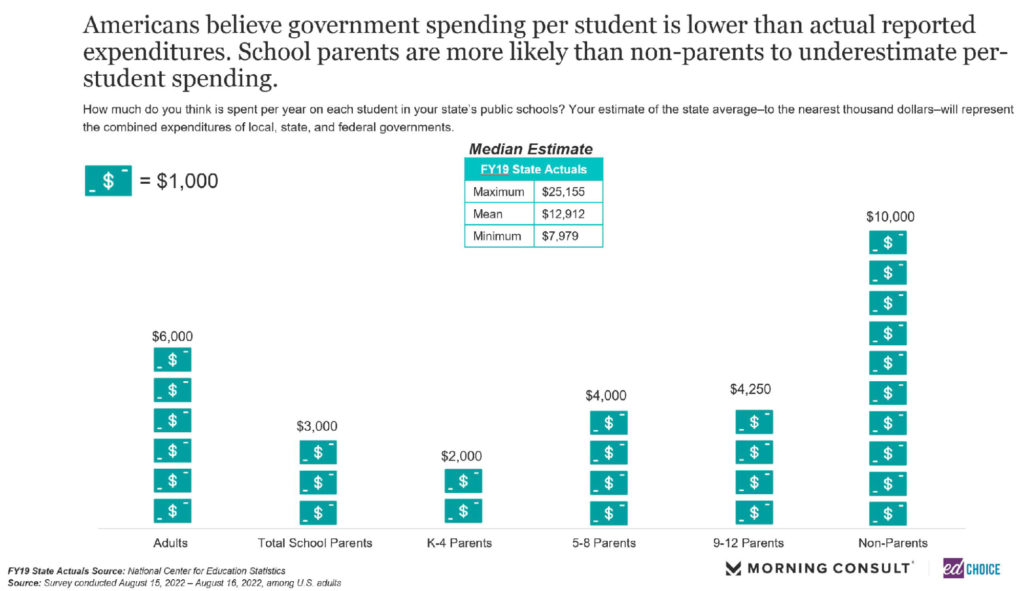
9. Parents are generally satisfied with their child’s experience at school, regardless of schooling sector. Parents of each school type report satisfaction levels of at least 80 percent. The majority of private school parents report being very satisfied with their schooling experiences. District school parents have been the least likely group to say they are very satisfied with their schooling experiences. However, in August, the percentage of district school parents who reported being very satisfied with their schooling experiences increased. That is a trend we have observed consistently since May.
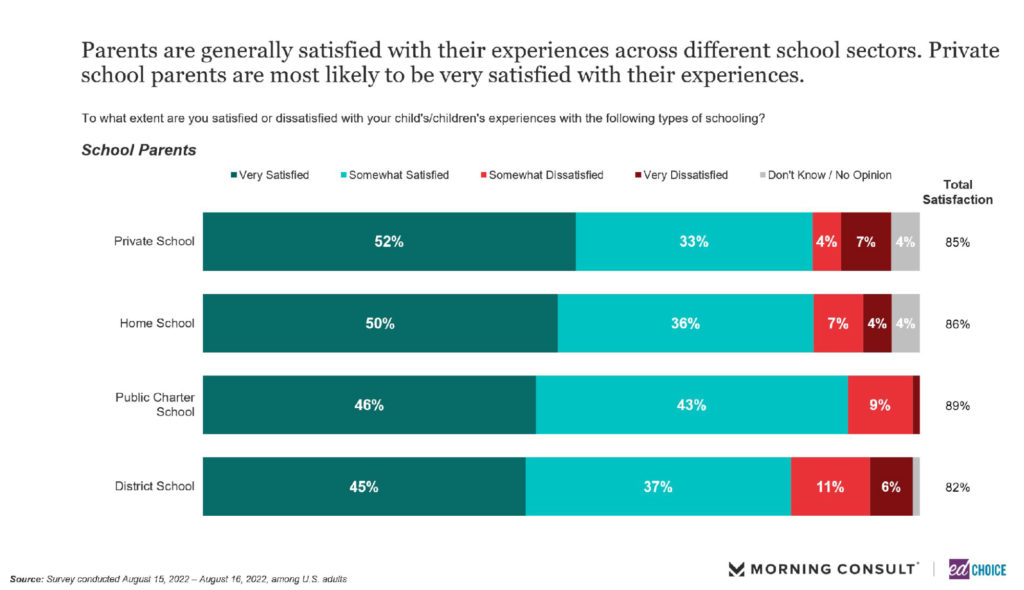
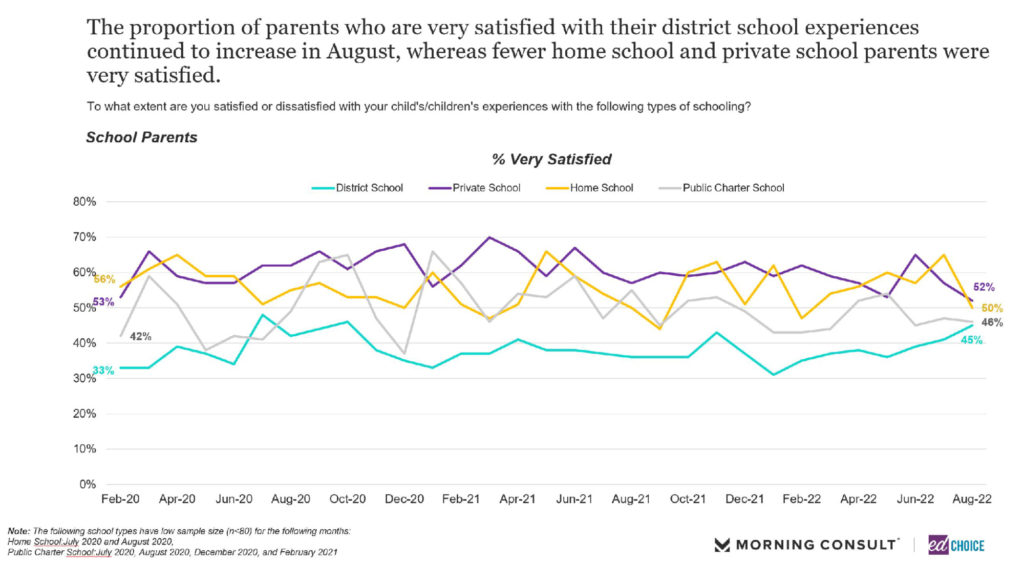
10. District school parents, homeschool parents and private school parents each have different motivations for their schooling decision. District school parents are most likely to name location as the main driver of why they chose that particular type of school. An increasing number of private school parents say academic quality is the motivation behind enrolling their child in a private school, up 6 points from July to August. Lastly, homeschool parents are most likely to prioritize a safe environment when it comes to their schooling decision.
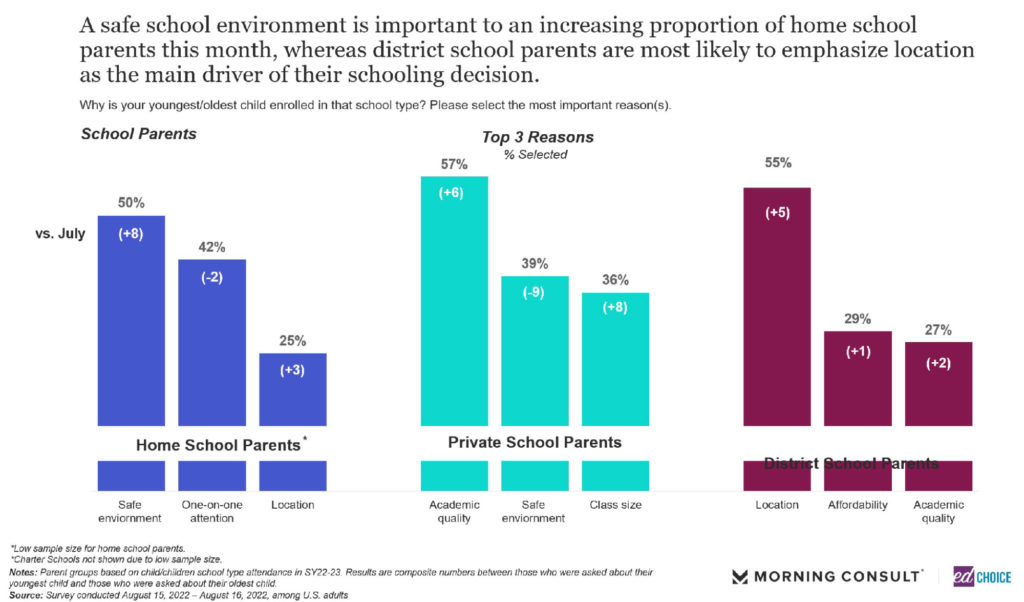
11. More than 70 percent of parents support various school choice policies. While support for education savings accounts (ESAs), school vouchers, and charter schools among all Americans decreased slightly in August, the level of support is still quite high and is even higher among school parents. ESAs, typically the most popular school choice policy, are supported by 68 percent of Americans and 75 percent of school parents. Vouchers are supported by 62 percent of Americans and 72 percent of school parents. Charter schools are supported by 64 percent of Americans and 73 percent of school parents. Interestingly, diving into the demographics, Gen Z support for ESAs, vouchers and charter schools decreased by 12 points, 14 points and 11 points, respectively.
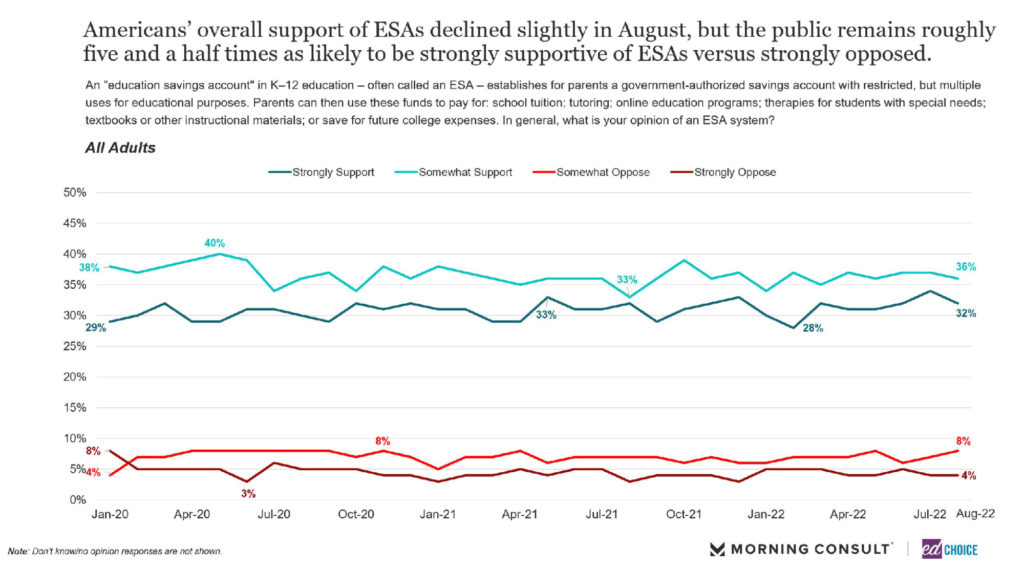
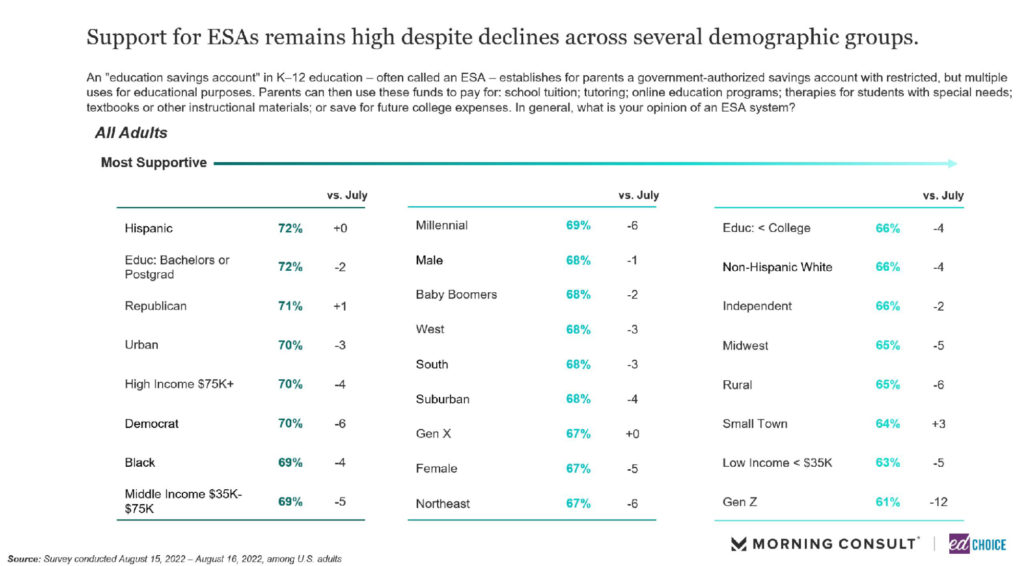
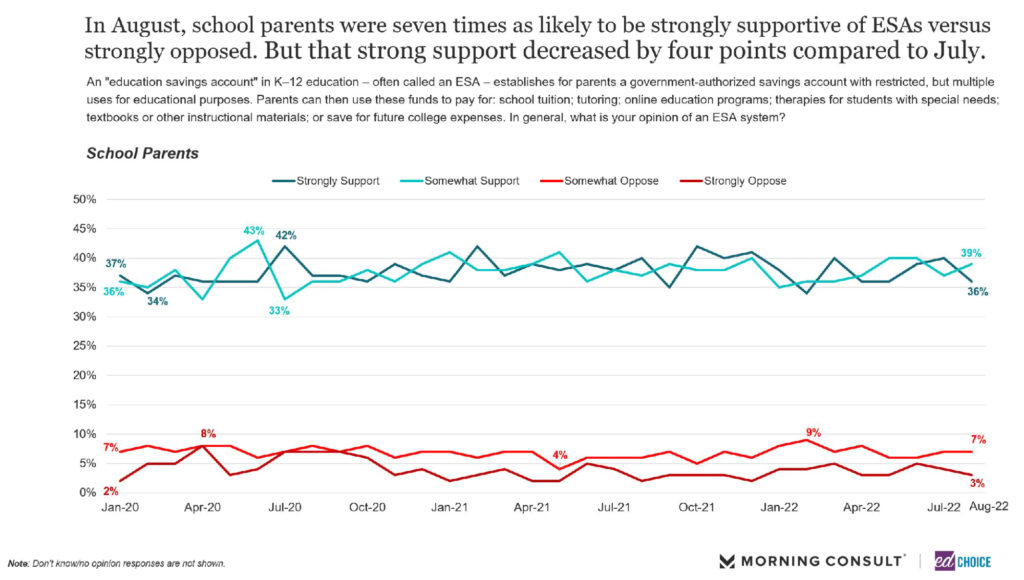
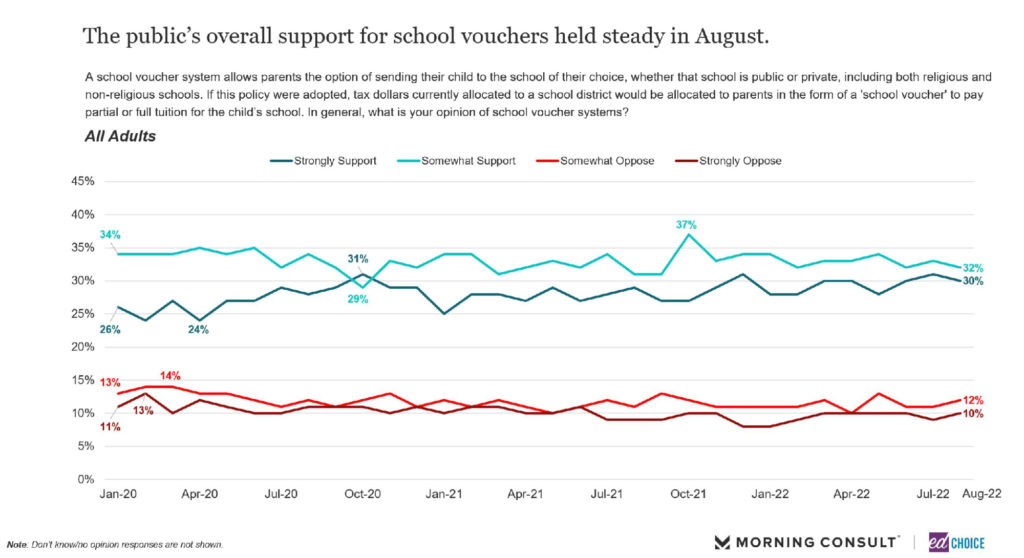
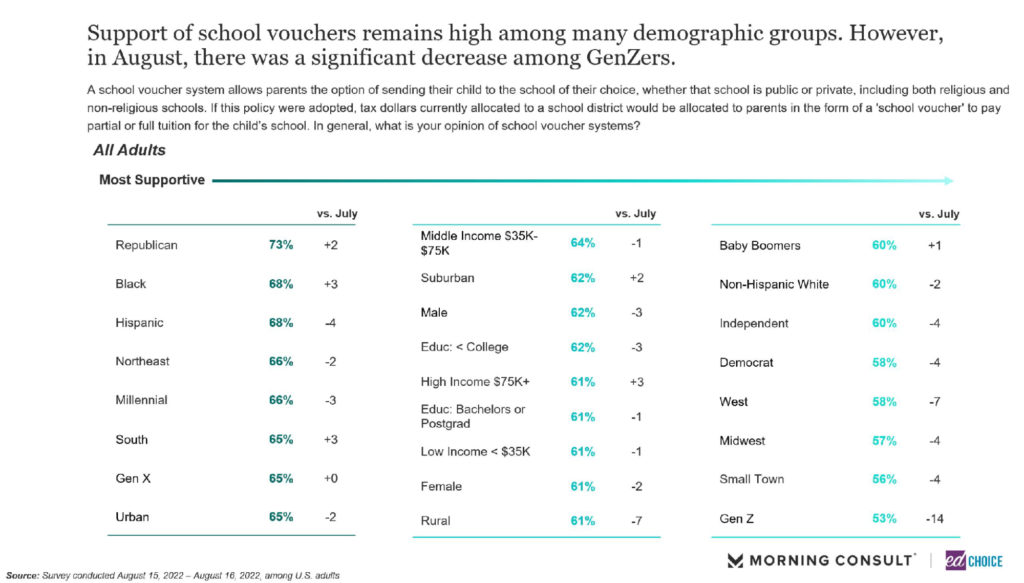
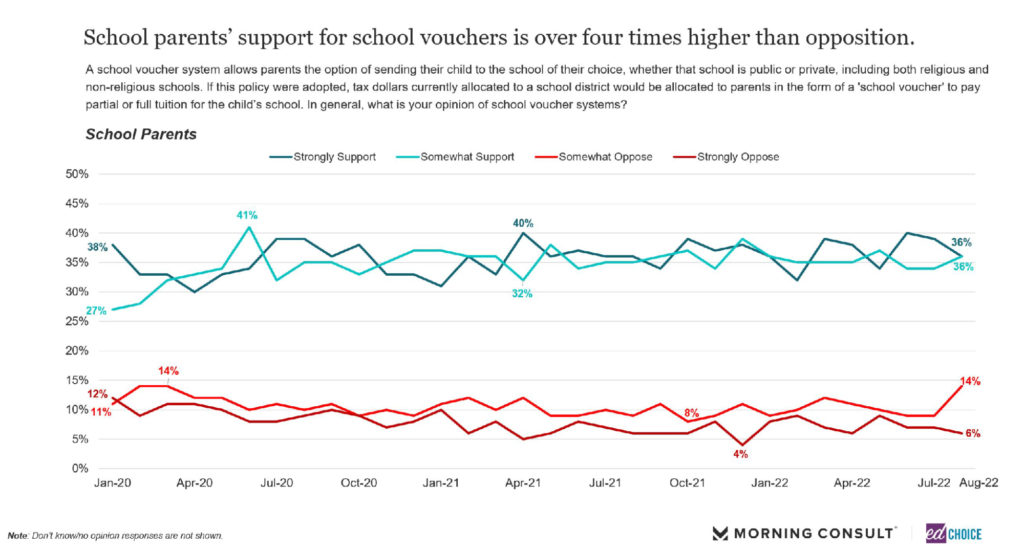
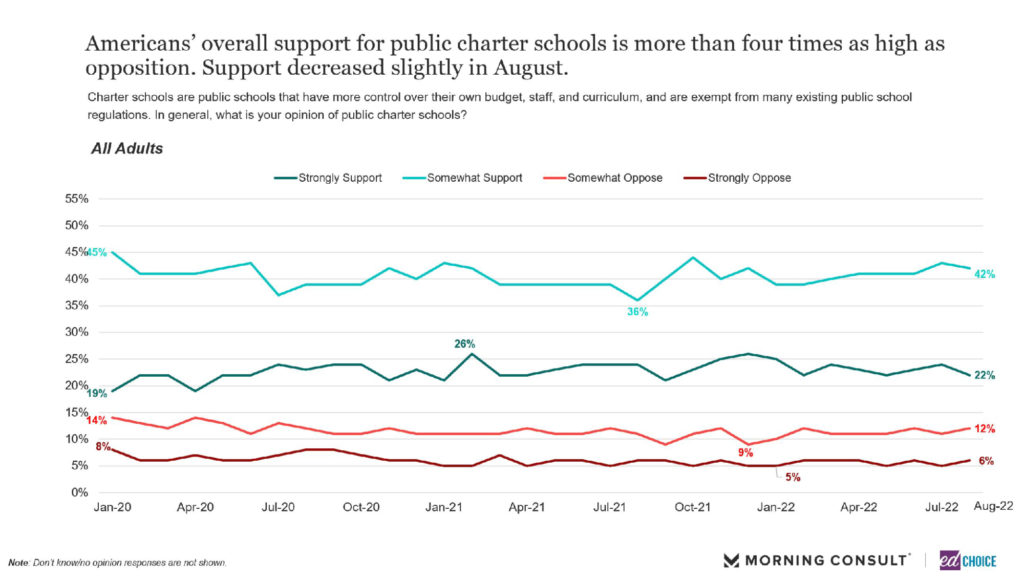
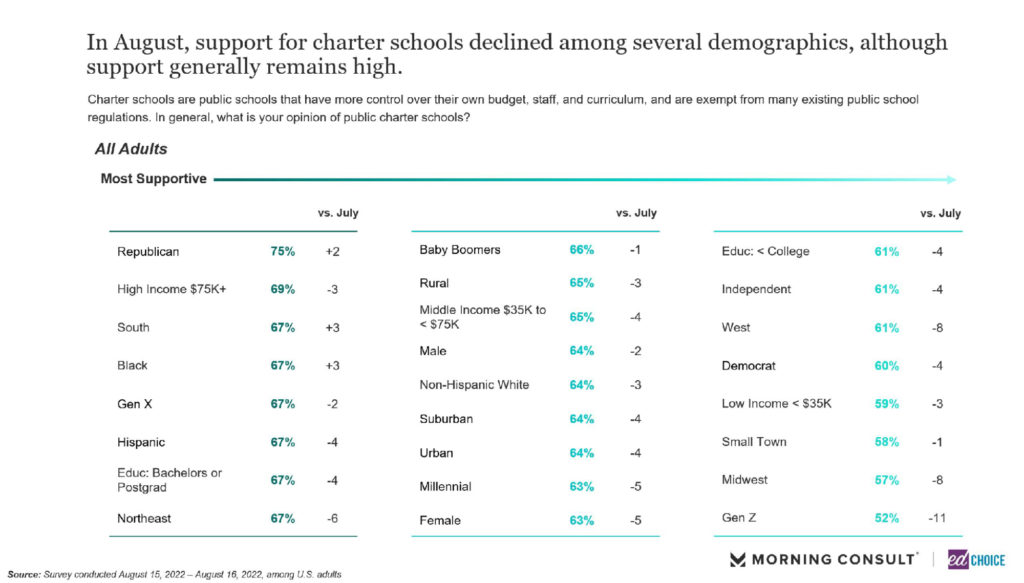

12. Open enrollment was the only school choice policy to see increased support from the general public in August. Support for open enrollment increased to 70 percent support in August. With the 2-point increase in support in August, open enrollment surpassed ESAs as the most popular school choice policy among the general population. Open enrollment is also very popular among school parents, with more than three-fourths of school parents supporting the policy.
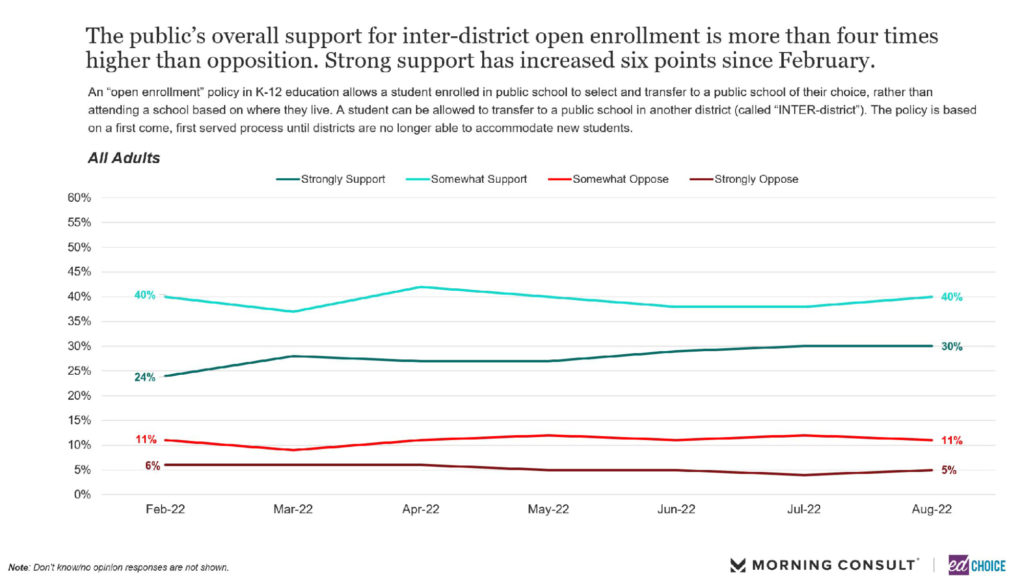
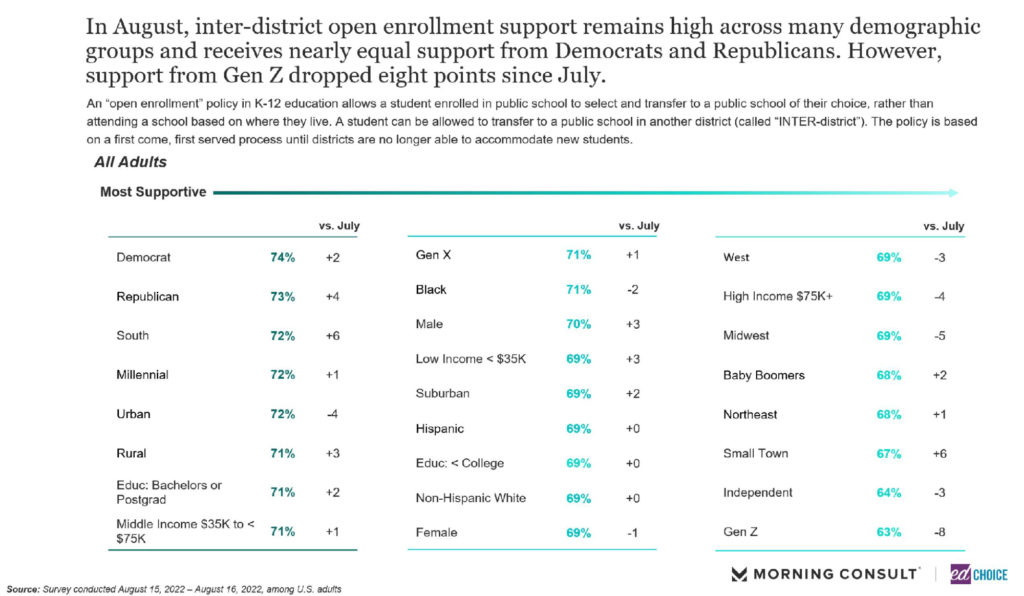
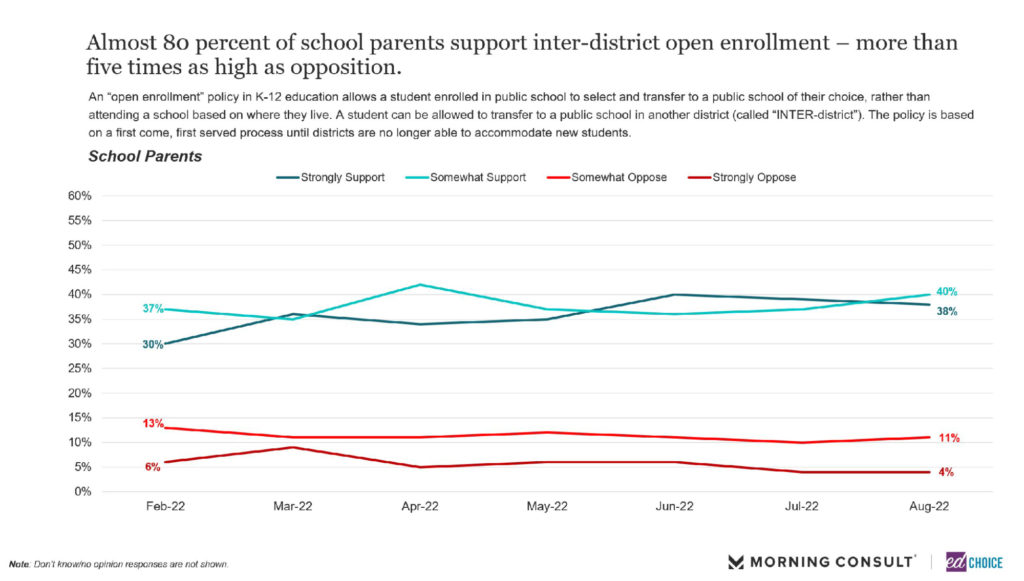
13. The proportion of Americans who view education as a top issue held relatively steady in August. Since we began asking this question, Americans are consistently more likely to prioritize education issues at a local level rather than state or national levels. That remained true in August. Local prioritization of education issues saw a 2-point bump last month. With the slight increase in August, education issues trail only economic issues and health care in terms of voters’ prioritization at a local level. Special education parents and small-town residents were most likely to prioritize education issues.

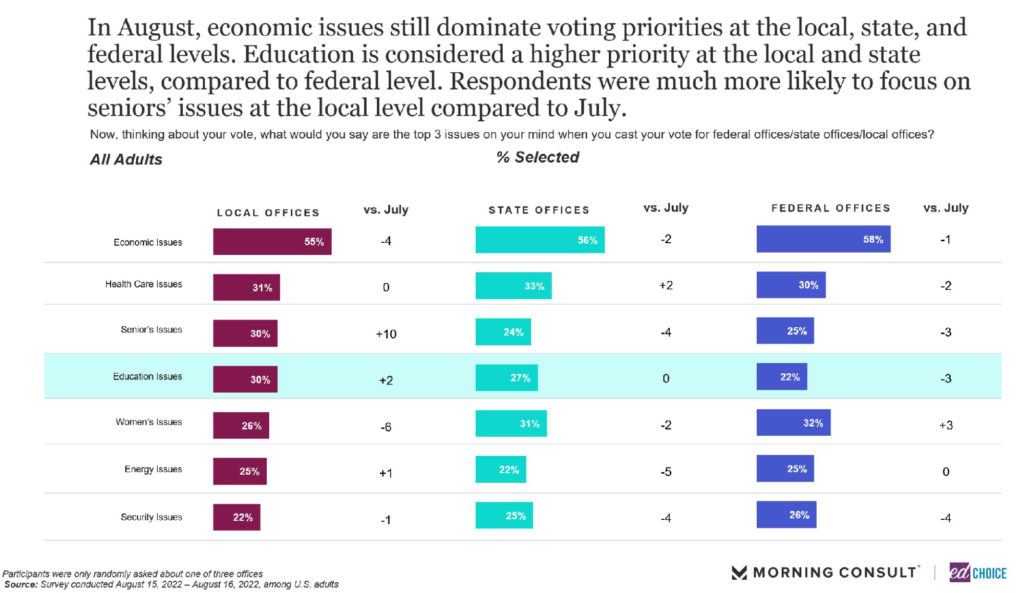
14. Homeschooling is still viewed favorably by the majority (57%) of parents. However, strong favorability towards homeschooling declined in August. Roughly one out of four parents now have “very favorable” opinions on homeschooling. As strong favorability fell, the percentage of parents with “not that favorable” views of homeschooling increased 7 points in August.
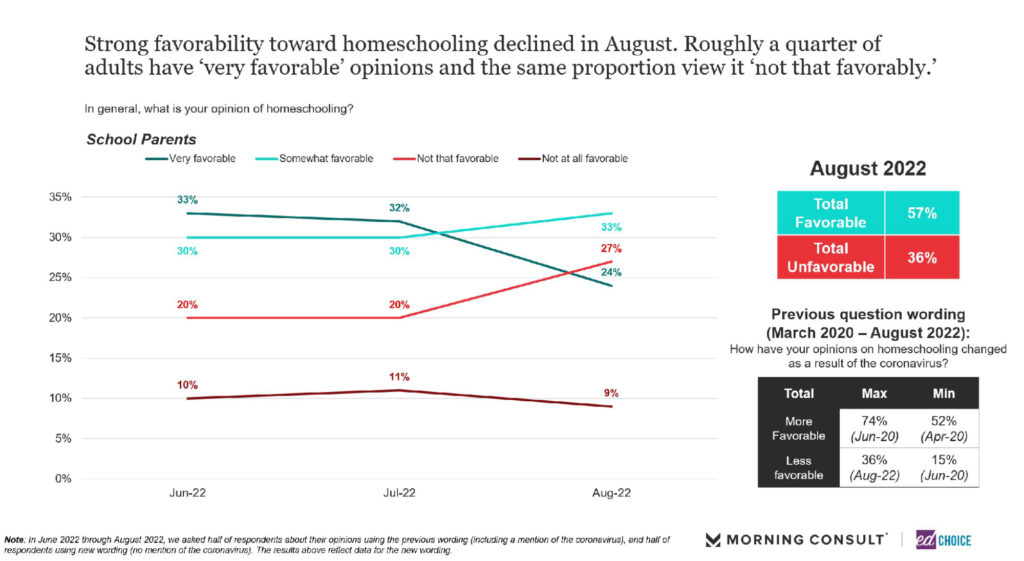
Visit the EdChoice Public Opinion Tracker site to access past reports, crosstabs, and questionnaires. We update our national and state dashboards every month. We also provide a more in-depth description of our research and survey methods.
Our K–12 education polls archive is updated on a rolling basis, roughly a few times each month. Please don’t hesitate to let us know if we are missing any surveys, or if there are accidental errors.




